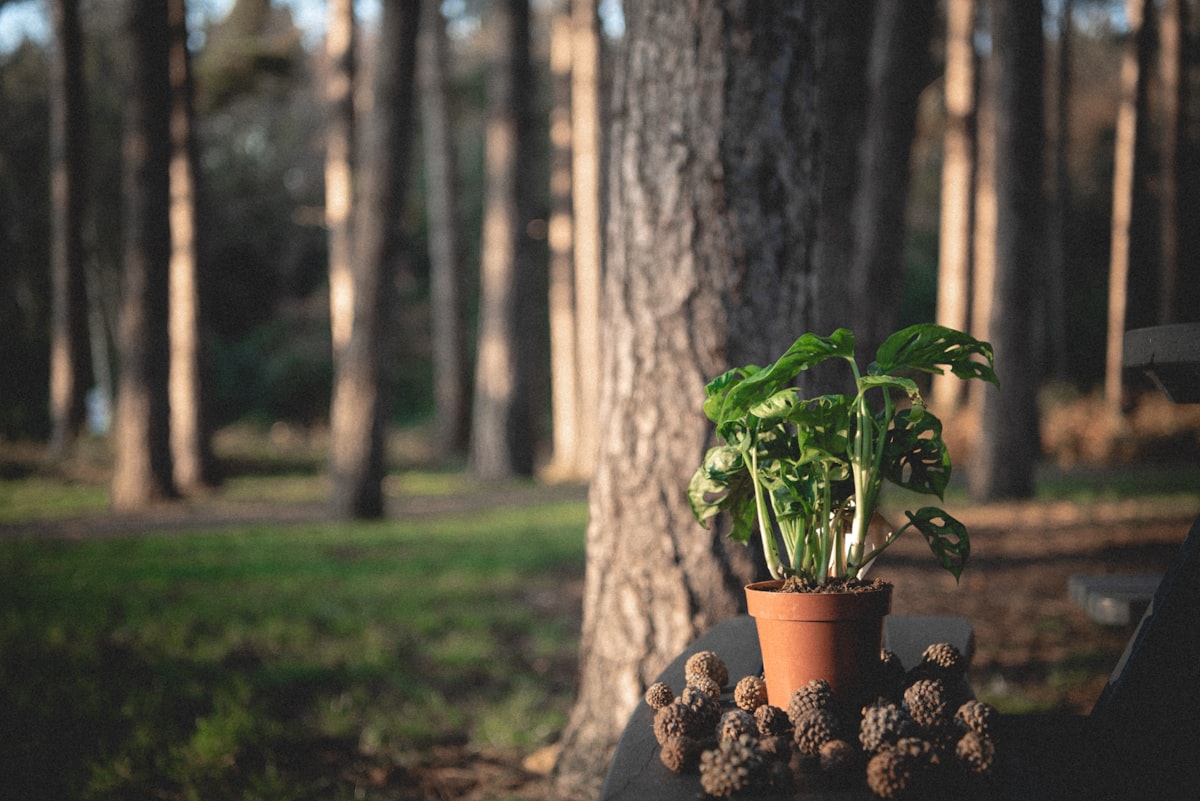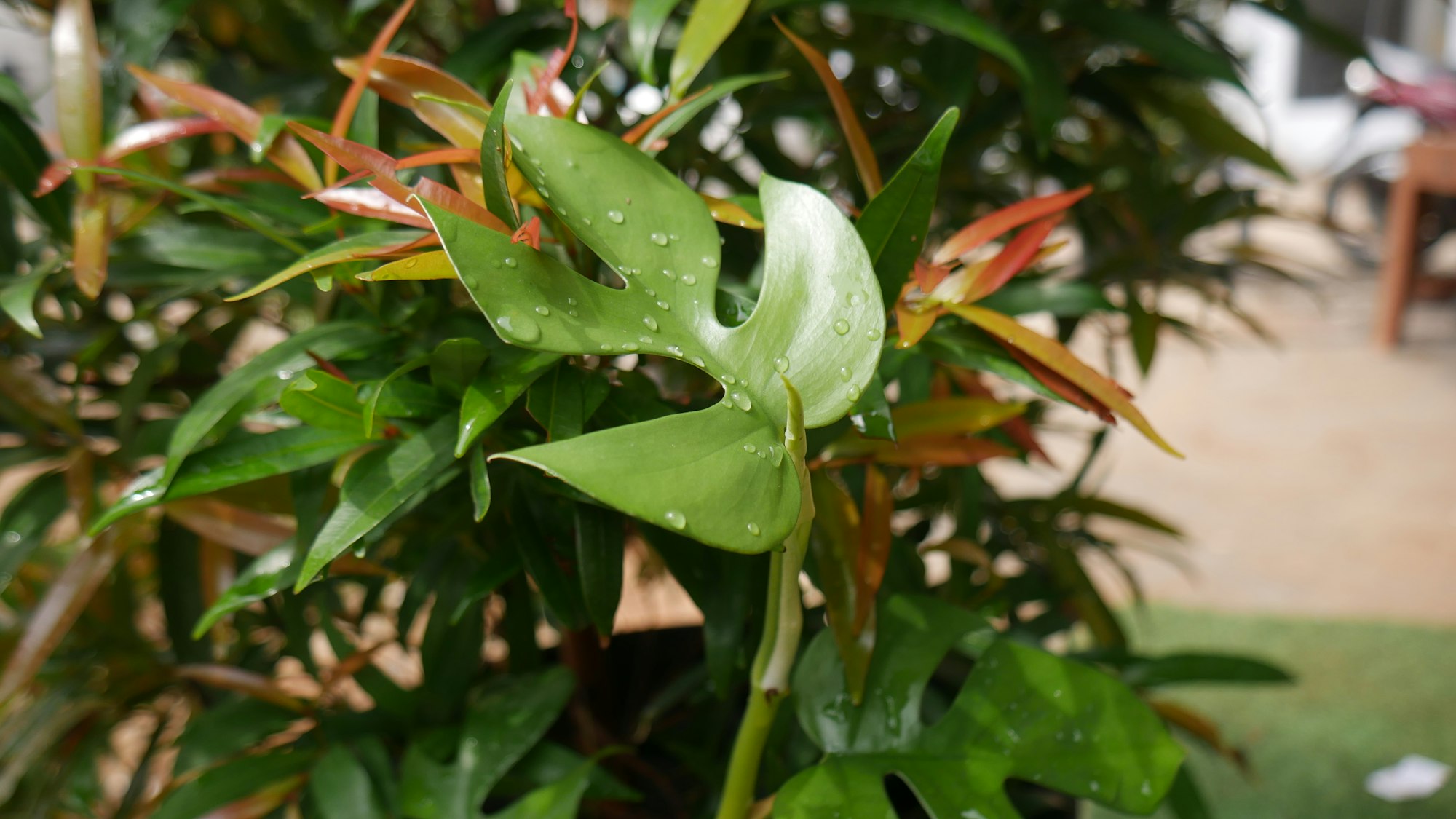How to Grow Mini Monstera
Growing Mini Monstera is enjoyable for all plant enthusiasts. This tropical plant is admired for its climbing nature and glossy, hole-filled leaves.

Table of Contents
To successfully grow and care for your Mini Monstera, it is essential to create the right environment.
Providing bright, indirect light and maintaining proper watering, humidity, and temperature conditions will ensure your plant thrives.
About Mini Monstera
The Mini Monstera, known by its scientific name Rhaphidophora Tetrasperma, is a popular vining houseplant.
It belongs to the Araceae family and is native to Southern Thailand and Malaysia, although it's not closely related to the well-known Monstera Deliciosa plant.
As an indoor plant, the Mini Monstera thrives in bright, indirect sunlight and is favored for its attractive, hole-filled, glossy leaves.
Due to its tropical origin, it prefers a higher humidity level of around 50-60%.
Place your plant on a pebble tray with water halfway up the stones, or use a humidifier.
Growing Mini Monstera
To grow a healthy Mini Monstera, choose a well-draining soil mix consisting of equal parts potting soil, perlite, and orchid bark.
This combination will provide the necessary drainage and mimic the plant's natural rainforest habitat.
Use a container with drainage holes to prevent waterlogging and root rot.
Your Mini Monstera will thrive in slightly acidic soil and grow 6 to 8 feet tall if given proper support.
When planting, gently loosen the root ball and situate it in the prepared soil mix.
Water your Mini Monstera regularly, but allow the soil to dry out partially between waterings as they are sensitive to overwatering.

Caring for Mini Monstera
Sun and Temperature
To grow a healthy Mini Monstera, provide bright indirect light but avoid direct sunlight.
Keep the plant in temperatures between 65 and 80 degrees Fahrenheit for optimal growth.
Water and Humidity
Water your Mini Monstera when the top 1-2 inches of soil feels dry, but avoid overwatering. Maintain a humidity level of around 60% for the plant to thrive.
Soil
Choose well-draining, acidic-to-neutral soil and mix it with perlite to facilitate drainage.
Orchid bark and charcoal can also be added to improve the soil structure.

Fertilizer
Feed your Mini Monstera with a liquid fertilizer diluted to half-strength every 4-6 weeks during the growing season.
Be careful not to over-fertilize as it may cause fertilizer burn.
Repotting
Repot your Mini Monstera when its roots start to outgrow the current pot.
Carefully transfer it to a new pot 3-5 inches bigger than the old one, and add fresh soil.
Pruning and Propagation
Regularly prune leggy growth and remove any dead or damaged leaves.
Propagate the plant by taking stem cuttings with at least one node and placing them in water or moist soil to root.
Troubleshooting Plant Problems
Growing Problems
If your mini Monstera is experiencing yellow leaves or leggy growth, it might be due to insufficient light.
Move the plant closer to a window to increase light exposure.
Overwatering can also cause root rot or drooping leaves; try reducing your watering frequency and ensure proper drainage.
Pests and Diseases
Common pests that affect mini Monsteras include spider mites, fungus gnats, and scale.
Look for signs of infestation, such as small bugs or discolored leaves, and treat them with insecticidal soap or neem oil.
Diseases like root rot can be prevented by not overwatering and ensuring good air circulation around your plant.

Leaves
Curled or yellowing leaves can indicate problems like overwatering, lack of light, or fertilizer burn.
Ensure your plant receives enough light, adjust your watering schedule, and be cautious when fertilizing.
Fenestrated leaves are desirable in mini Monsteras but might not develop in low-light conditions, so ensure optimal lighting for healthy growth.
Companion Planting
Companion plants can be beneficial for your mini Monstera in providing additional support and mutual growth.

Consider pairing your mini Monstera with plants that thrive in similar conditions, such as Philodendrons or Pothos.
These companions should share the same light, water, and humidity requirements to coexist harmoniously.
Conclusion
Growing a Mini Monstera is a rewarding experience, as they are low-maintenance plants that can add a tropical flair to your home.
Position them in a spot with bright, indirect light, and plant them in a well-draining, slightly acidic potting mix.
Maintain consistent soil moisture and provide humidity levels around 50-60% for optimal growth.
Follow these simple guidelines, and you'll be well on your way to nurturing a thriving Mini Monstera in your indoor space.
Frequently Asked Questions
What is the ideal watering frequency?
Water your Mini Monstera when the top inch of soil feels dry. This may be about once a week, but adjust according to your plant's needs and the humidity of your environment.
Which varieties stay small?
Rhaphidophora Tetrasperma, or the Mini Monstera, is a popular option that stays small.
It's an excellent choice for those with limited space who still want a Monstera plant's aesthetic.
How to train a Mini Monstera for growth?
Use a stake or moss pole to support the plant and encourage it to climb vertically.
As the Mini Monstera grows, its aerial roots will attach to the support, promoting more vigorous growth.
What is the optimal light exposure?
Place your Mini Monstera in a spot with bright, indirect light.
East or west-facing windows with filtered light are ideal for encouraging substantial growth without causing leaf burn.
How do I propagate a Mini Monstera?
Propagate your Mini Monstera by taking a cutting with at least one node.
Place the cutting in water or well-draining soil, and it should begin rooting within a few weeks.
When should I trim my Mini Monstera?
Trim your Mini Monstera when you notice it becoming leggy or if it's outgrowing its space.
Prune back to just above a leaf or stem junction and ensure you use sterilized tools to prevent infection.



